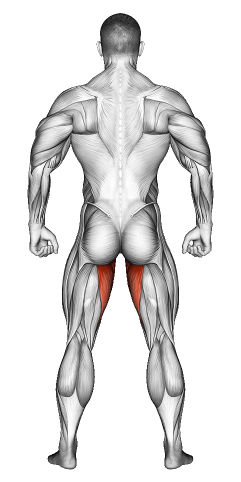Praying Squat: Video Tutorial & Exercise Guide

Written By: Claude Michael
Updated: Oct 13, 2024
| Workout | Praying Squat |
| Primary Muscle Group | Adductors |
| Equipment Required | Bodyweight |
| Force Type | Push |
| Mechanics | Compound |
| Exercise Type | Strength |
| Difficulty | Beginner |
Praying Squat: Video Tutorial & Exercise Guide
- 1.Praying Squat: Muscle Groups
- -1.1Primary Muscle Group
- -1.2Secondary Muscle Group
- 2.Praying Squat: Step-by-Step Guide
- 3.Praying Squat: Overview
- 4.Praying Squat: Benefits
- 5.Praying Squat: Pro Tips & Advanced Techniques
- 6.Praying Squat: Progression Plan
- 7.Praying Squat: Frequently Asked Questions (FAQs)
Praying Squat: Step-by-Step Guide
- Step 1: Stand with your feet slightly wider than shoulder-width apart, toes pointed slightly outward. Bring your hands togClaude in front of your chest in a "prayer" position, with your elbows bent.
- Step 2: Engage your core and begin to lower your body by bending your knees and pushing your hips back, as if you’re sitting into a chair. Keep your chest up and your hands in the prayer position throughout the movement.
- Step 3: Continue lowering yourself until your thighs are parallel to the ground or slightly lower, making sure your knees are tracking in line with your toes.
- Step 4: Pause at the bottom of the squat, pressing your elbows lightly against the insides of your knees to deepen the stretch in your hips and groin.
- Step 5: Push through your heels to stand back up, squeezing your glutes at the top. Repeat for the desired number of reps, maintaining control throughout the movement.
Praying Squat: Overview
The Praying Squat is a variation of the traditional squat that emphasizes flexibility, balance, and lower body strength. By holding your hands in the prayer position and pressing your elbows against your knees, you deepen the stretch in your hips and improve mobility while targeting your quads, glutes, and hamstrings.
This exercise not only strengthens the lower body but also enhances flexibility in the hips and groin, making it a great addition to any workout that focuses on functional movement and mobility. It is ideal for those looking to improve their squat depth and overall lower body flexibility.
Praying Squat: Benefits
The Praying Squat helps build strength in the quadriceps, glutes, hamstrings, and calves, while also improving flexibility in the hips, groin, and ankles. This movement enhances your squat depth, making it easier to perform other squat variations or lower body exercises with proper form.
This exercise is excellent for improving balance and stability, as you need to engage your core and maintain an upright posture throughout the movement. The prayer position helps you maintain proper alignment, preventing you from rounding your back or leaning too far forward.
The Praying Squat is also a great way to increase mobility in the hips and lower back, making it beneficial for athletes, yogis, and anyone looking to enhance functional movement patterns.
Praying Squat: Pro Tips & Advanced Techniques
Focus on keeping your chest lifted and your back straight throughout the movement. Press your elbows gently against the insides of your knees at the bottom of the squat to deepen the stretch in your hips. For an added challenge, you can hold a weight close to your chest or perform the exercise with a resistance band around your thighs to increase muscle activation. Ready to build strength and mobility? Let’s squat!
Praying Squat: Progression Plan
Beginner
Intermediate
Advanced
Praying Squat: Frequently Asked Questions (FAQs)
What muscles does the Praying Squat target?
+The Praying Squat primarily targets the quadriceps, glutes, hamstrings, and calves, while also engaging the core for balance. It improves hip and ankle flexibility.
Can beginners perform Praying Squats?
+Yes, this exercise is suitable for beginners. Focus on mastering the depth and mobility aspects of the squat before adding weights or increasing difficulty.
How can I make the Praying Squat more challenging?
+To increase the difficulty, hold a weight close to your chest or place a resistance band around your thighs. You can also try performing the exercise more slowly to enhance muscle activation.
How often should I include Praying Squats in my workout?
+You can include Praying Squats 2-3 times a week as part of your lower body or mobility routine. They pair well with other flexibility-focused exercises like lunges or deep squats.
What common mistakes should I avoid?
+Avoid leaning too far forward or letting your knees collapse inward during the squat. Focus on keeping your chest lifted, back straight, and knees aligned with your toes.
Share
Don’t Wish for It, Work for It – Join the FlexXP Newsletter Today!
Thank you for signing up for the FlexXP Newsletter!
This site is protected and the Google Privacy Policy and Terms of Service apply.
